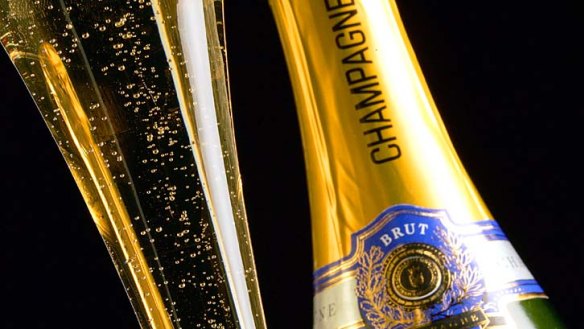Spotlight on sparkling wine
Peter Bourne nominates his four favourite sparklings of the month.

La Champagne the region, Le Champagne the wine - the name of the world's most famous sparkling wine is inexorably intertwined with its birthplace. The Champagne countryside is some of the most beautiful in France, but it's what is beneath this hallowed ground that is most important: a deep bed of chalk. It's this that gives Champagne its unique terroir, which encompasses the climate, the soil, the aspect and all the other latent factors that human intervention, time and experience transform into exceptional wine.
The English reckon they have the same chalk in the South Downs - think the White Cliffs of Dover. That's true, but the South Downs have a maritime climate, while Champagne is continental. English sparkling wine is getting some airplay, but it will never be Champagne. Tasmania has a similar cool maritime climate to England and, while Tassie makes our best sparkling wine, without any significant chalk it will never be Champagne in style or name.
But the term "sparkling wine" suggests ordinary rather than extraordinary. It's time we conceived a more evocative tag for our superb sparklings. Even the French have issues naming their non-Champagne sparklings, resolving it with Crémant. So from Alsace, it's Crémant d'Alsace; the Loire, Crémant de Loire, and so on. Each offer value and flavours a step away from Champagne. The Spanish use Cava, the Germans Sekt, while Italy leaps sideways with their mandatory aperitivo: Prosecco, the appley fresh fizz from the Veneto.
All bubblies are romantic and, while Champagne remains the pinnacle, there are plenty of effervescent alternatives to enjoy this Valentine's Day.
Cave De Lugny Cremant de Bourgogne Blanc de Blancs - Burgundy, France, $20
Made from 100 per cent chardonnay fruit grown just hours from Champagne, this is a glittering alternative to the real thing. It's clean, bright and tight with juicy pink grapefruit and orange blossom flavours and a lemon fresh finale. Exclusive to Vintage Cellars, it offers incredible value for money.
Canella Prosecco Superiore di Conegliano DOCG - Veneto, Italy, $28
Made from the uninspiringly named grape variety glera, Prosecco is the basis of the favourite cocktail at Venice's famous Harry's Bar: the Bellini - freshly squeezed white peach nectar topped with Prosecco. It's also delicious unadulterated, with floral fresh aromas, delicious granny smith apple flavours and a razor-sharp finish.
2002 Ruinart Dom Ruinart - Reims, France, $350
This is the other Dom. A prestige cuvée dedicated to Dom Thierry Ruinart, a close friend of Dom Pérignon. The 2002 is pure chardonnay and an absolute cracker. Spring blossom, lemon pith and white nectarine aromas with hints of macadamia nuts. Deeply satisfying, multilayered and complex with a surprisingly nimble finish.
Deutz Marlborough Cuvée Brut - Marlborough, New Zealand, $28
Champagne Deutz and Montana Wines launched this joint venture sparkling in 1990. It's made from pinot noir and chardonnay in the Champagne style. The bouquet speaks of citrus blossom, warm brioche, cloudberries and glacé fruit. The palate offers deep flavours of pink grapefruit and dry toast with a fine lemon bright lift.